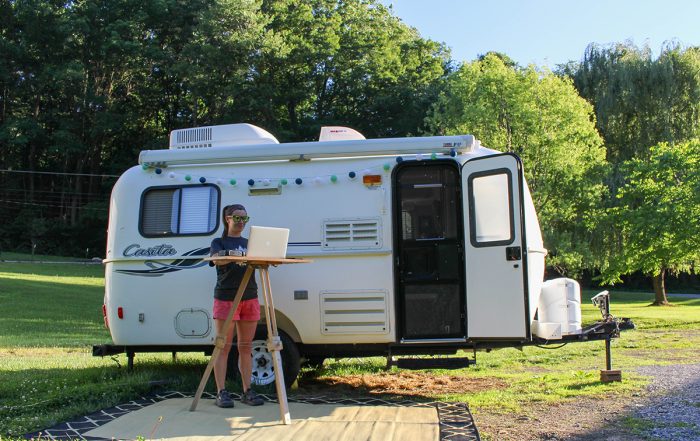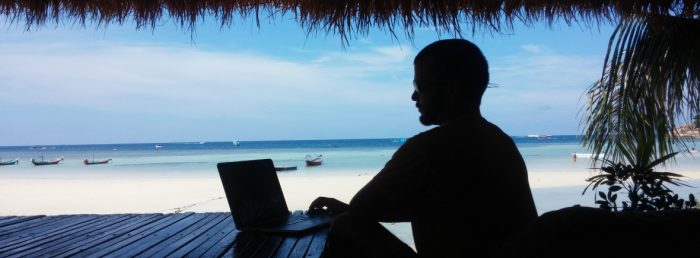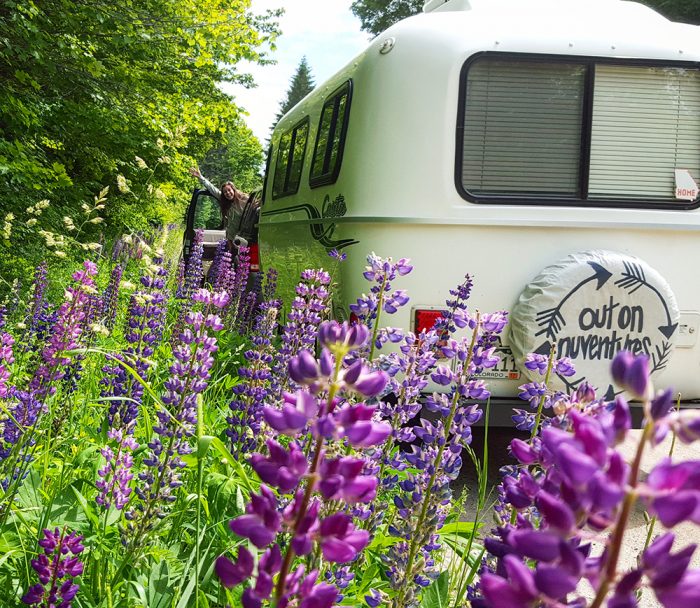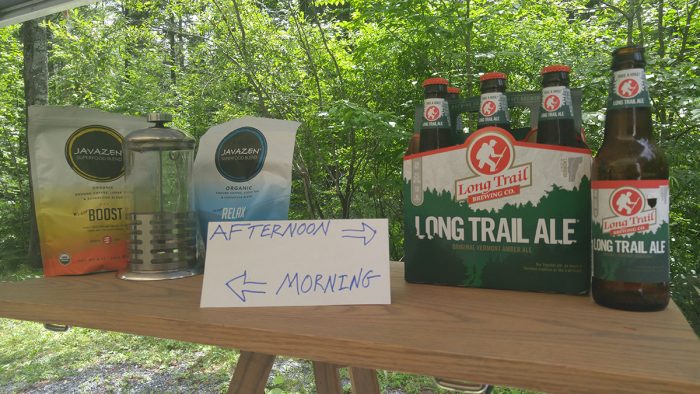A connected world means many professionals can work anywhere. Two GearJunkie contributors detail how they moved their careers out of the office and onto the open road.

Do pictures of laptops by the sea (or deep in the woods) leave you yearning for a remote, outdoor office? Two years ago, my wife Lindsey and I were determined to figure out how to make that our reality. I’m a CPA and Lindsey is a writer and photographer.
After two years of running businesses from around the globe, we have a few tips to help you transition from an office cube to a comfortable outdoors space.
1. Establish A Mobile Office
We live and work out of a 2009 Casita Spirit Deluxe model camper. The pull-behind model has 113 square feet of living space, and it doubles as an office. We work inside during foul weather but step outside (and move the desk out there) whenever possible.
2. Power Your Devices
This is the biggest puzzle to solve. Remote work and travel may put workers in different places each night. From night to night, you may be in a hotel, friend’s house, campsite, or even boon-docking deep in the woods.

3. Get Connected To Wi-Fi
4. Create An Ideal Workspace













